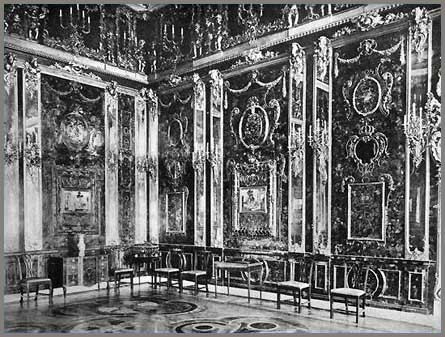"At some point Russians living in Kaliningrad also began to fall in love with the old Koenigsberg. They unearthed German street signs and hung them up in their apartments. They protested when local officials threatened to pave over old cobblestone roads with asphalt." (http://www.spiegel.de/international/zeitgeist/architectural-competition-held-to-rebuild-koenigsberg-city-center-a-980260.html)
Koneigsberg Castle courtesy http://archimaps.tumblr.com/page/276.
THe ruins of Koenigsberg Castle circa 1950 courtesy http://canitz.org/site/.
In 1968, Breshnev ordered the castle, "a hornet's nest of militarism and fascism", demolished. Photographers snapped photographs of the remnants of the castle which quickly became a cloud of dust. On the original site was built the most ghastly structure in history, The House of Soviets, nicknamed The Monster. Resembling a giant robot, the 20-story Soviet style structure was never completed. While the outside was painted for a 2005 visit by Putin celebrating the city's 750th anniversary, the inside remains incomplete.

Soviets demolish Koenigsberg Castle circa 1968 courtesy https://europebetweeneastandwest.wordpress.com/2015/07/15/revenge-of-the-prussians-the-house-of-soviets-in-kaliningrad-part-2/.
Koenigsberg history has not completely been erased: underneath the ghastly structure remain tunnels built by the Prussians. In 2001, the German magazine Der Spiegel financed the excavation of the castle's cellar in an attempt to find lost art. Rumour has it that the Amber Room was hastily disassembled and stored in the basement when the Red Army was advancing towards East Prussia in 1944.

Original Amber Room courtesy https://www.tumblr.com/search/aph:%20russian%20history.
"At some point Russians living in Kaliningrad also began to fall in love with the old Koenigsberg. They unearthed German street signs and hung them up in their apartments. The protested when local officials threatened to pave over old cobblestone roads with ashphalt." And they developped a fascination with the old Prussian castle. In 2010, Russia's Minister of Culture announced a referendum would be held in 2011 regarding whether or not to rebuild Koenigsberg Castle. In 2014, a competition was held to rebuild the city centre to reflect its German roots. It remains to be seen whether Koenigsberg Castle will be part of the architectural project (http://www.spiegel.de/international/zeitgeist/architectural-competition-held-to-rebuild-koenigsberg-city-center-a-980260.html).
Kaliningrad is resurecting its roots courtesy http://www.myvuelingcity.com/en/cities/kaliningrad/la-ciudad-del-ambar?refer=city.
Note: Koenigsberg Cathedral has already been restored (https://newcoldwar.org/russias-kaliningrad-is-restoring-the-german-heritage-of-konigsberg/).
No comments:
Post a Comment